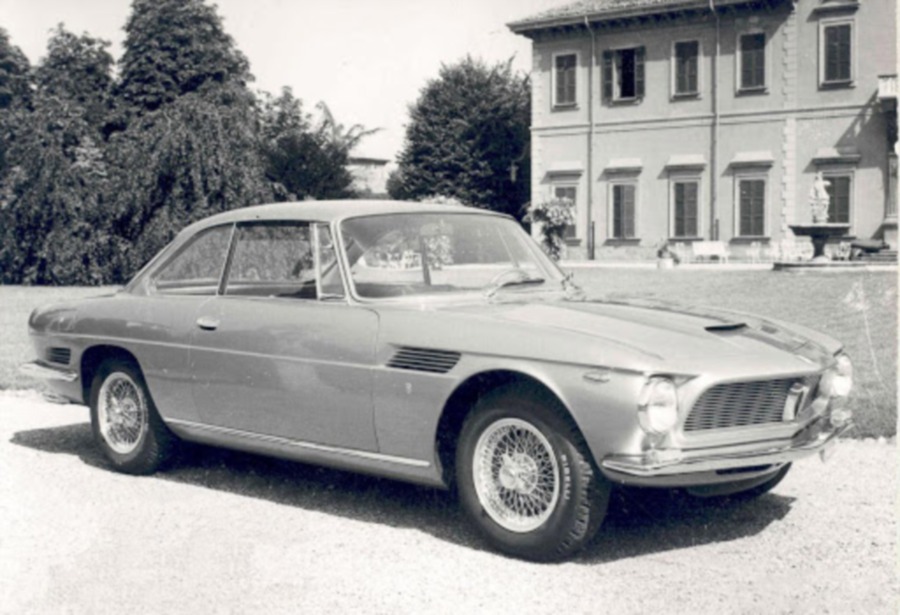AFTER World War ended, Europe was plunged into economic difficulties as scarce natural resources and materials were fought over by everyone rebuilding their shattered communities.
As a result, the auto industry was mostly reduced to building cheap and cheerful vehicles.
Motorcycles also did rather well and iconic products like Italian scooters Lambretta and Vespa were the bee’s knees in ration card-controlled Europe. And as is the case, necessity gave birth to a unique invention: the bubble car.
The Isetta was a novel solution for all-weather personal motor transport for a population that could not afford to buy cars and for industries that could not get their hands on enough metal and raw materials to produce anything more extravagant.
It was a success, not so much like the Beetle or the Morris Minor but enough to make it into modern folklore as an iconic machine.
The man responsible for the Isetta bubble car was Renzo Rivolta, who ran Iso Autoviecoli. Funny thing is, BMW’s copies of the Isetta was far more famous than anything that ever came out of Italy.
Flush with the success of the bubble car and their ventures into home appliances, they thought it would be a good idea to come up with a fantastic little sports car that would ride the wave of infinite optimism that began in the 1950s and carried on unabated until John Travolta discovered flared pants and oversized collars.
Rivolta’s expectation of success was not just based on strong macroeconomic fundamentals of Europe and their innate love for fashionable things, but was also grounded on his belief that the combination of a legendary engineer and iconic designer can result in a truly desirable vehicle.
He recruited former Ferrari engineer Giotto Bizzarini to come up with the chassis and made a phone call to the offices of Nuccio Bertone in case he had some free time to sketch up a storm.
As it turned out, old man Nuccio had just the designer for the job. Bright-eyed and bushy-haired Giorgetto Giugiaro was given the task of coming up with the looks for this new car.
The result was a pressed steel chassis with boxed in sections that was rigid enough to take on the muscle of the Corvette-sourced engine and it came with a double wishbone front suspension and de-Dion rear axle with longitudinal and lateral locating arms, a.k.a Watts-linkage.
Pretty much top-drawer stuff for when the Beatles’ troubles were still so far away.
Giugiaro came up with an elegant proportion of long bonnet and svelte tapering tail. It was topped by a slender glasshouse that would have looked at home with any badge on the nose.
Admittedly the face was a little agricultural with large round headlamps with large chrome bezels and a grille that was framed by sculpted metal. It looked almost truck-like.
If it had come out with the Grifo’s elegant, beautiful and eminently more memorable face, the Rivolta might have had a better chance at being successful. Maybe.
It appears that the original plan was to power it with a typical European powerplant, perhaps in the 2.5- to 3.0-litre size range but when Fiat came up with the 2300 coupe at Fiat prices, they had no choice but to move the car upmarket and the decision was to fit it with the more powerful V8 motor from Chevrolet.
We can argue now if they had made the right decision to move the car upmarket into a smaller volume segment but at the time, the prospect of going head on with Fiat must have been terrifying. Better to compete with smaller names like Maserati and Ferrari.
The production of the car was designed for mass market. They had developed press dies for all the major metalwork but the decision to move it up the price bracket meant they would not have the volume to make use of the dies.
In the end, the dies were kept at the factory and every now and then it would be sent out to a third-party press line, which they had contracted, to make pressings for series production. It was an unsatisfactory arrangement, I’m sure, in terms of the quality control, cost and other factors.
Priced at US$9,000 at launch, it was more than a price match for anything that Maserati or Jaguar or even Ferrari made at the time and they sold 171 units in the first full year of production in 1963. Sadly, that was their best year.
Despite having a famous engineer and designer as progenitors, the Rivolta could not muster sustained public interest.
It’s probably not so much due to the looks or driving characteristics but perhaps it was more due to the Italian quality control and the fact that Iso is not as glamorous a brand as Ferrari with all the racing testosterones and a charismatic patriarch attracting buyers.
The Rivolta was designed as a high-speed cruiser and not a mountain road climber. Thanks to a slow five-turn recirculating ball steering and seven-degree castor at the front, it was more adept at highway cruising and was reportedly very stable at high speed. The castor angle says it all.
In total, fewer than 800 units were made in the eight-year production run and today, they are very rare. Because they were not as well known or beautiful as Maserati or Ferrari or Jaguar, the cars were not kept as lovingly.
However, the use of Corvette engines meant that they have generously proportioned engine bays that can take most large modern engine. If, for example, you fancy a Mercedes-Benz or BMW V8 under the bonnet, it is definitely doable.
In short, if you want to build fancy cars, there are two options: make them really fancy, the way Horacio Pagani, Christian von Koenigssegg, Bugatti and Lamborghini have done. In which case, they don’t need to go racing and can sell their cars on a combination of bling and performance.





